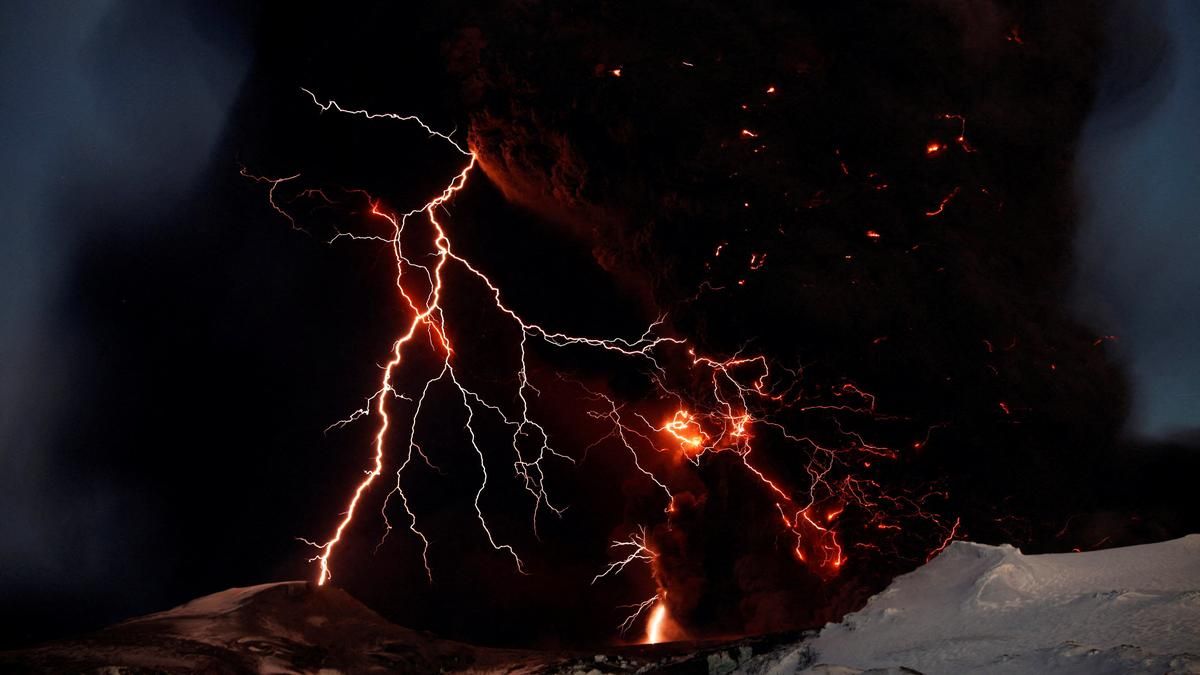What is volcanic lightning?

IN NEWS
Volcanic lightning — a rare and fascinating natural phenomenon — occurs during volcanic eruptions, producing powerful lightning flashes not through thunderstorms but due to electrostatic charges within volcanic plumes.
ANALYSIS
- Nature of the Phenomenon: Volcanic lightning is distinct from typical thunderstorm lightning. It arises during the early stages of a volcanic eruption due to the intense collision and friction between ash and rock particles within the volcanic plume.
- Mechanism:
- The collisions among ash particles generate static electricity.
- This build-up of charges creates visible flashes of lightning either in dense ash clouds near the ground or higher up in the eruption plume where ice particles collide.
- The presence of water vapour from magma further enhances charge formation — studies show volcanic plumes often have higher water content than thunderstorm clouds.
- Scientific Importance: Understanding volcanic lightning helps scientists monitor eruptions and predict their intensity and duration.
- Early Warning System:
- The World Wide Lightning Location Network (WWLLN) detects these discharges globally.
- Tracking lightning patterns aids in early alerts to residents near volcanoes and aviation authorities, allowing preventive measures before a full-scale eruption.
- Volcanic lightning also helps map ash cloud movements, which are crucial for air traffic safety as volcanic ash can cause severe engine damage.
- Historical Context: The earliest recorded observation of volcanic lightning was by Pliny the Younger during the 79 AD eruption of Mount Vesuvius.
- The first scientific studies were conducted by Italian physicist Luigi Palmieri in the mid-19th century (1858–1872), documenting lightning activity during multiple eruptions.
STATIC PART
- Phenomenon Type: Natural electrical discharge during volcanic eruptions
- Primary Cause: Electrostatic charge from collisions of ash, ice, and rock particles in volcanic plumes
- Early Detection Network: World Wide Lightning Location Network (WWLLN)
- Historical Observation: Mount Vesuvius eruption, 79 AD (Pliny the Younger)
- Notable Researcher: Luigi Palmieri (Italy, 19th century)
Updated – 07 Nov 2025, 05:20 PM | The Hindu